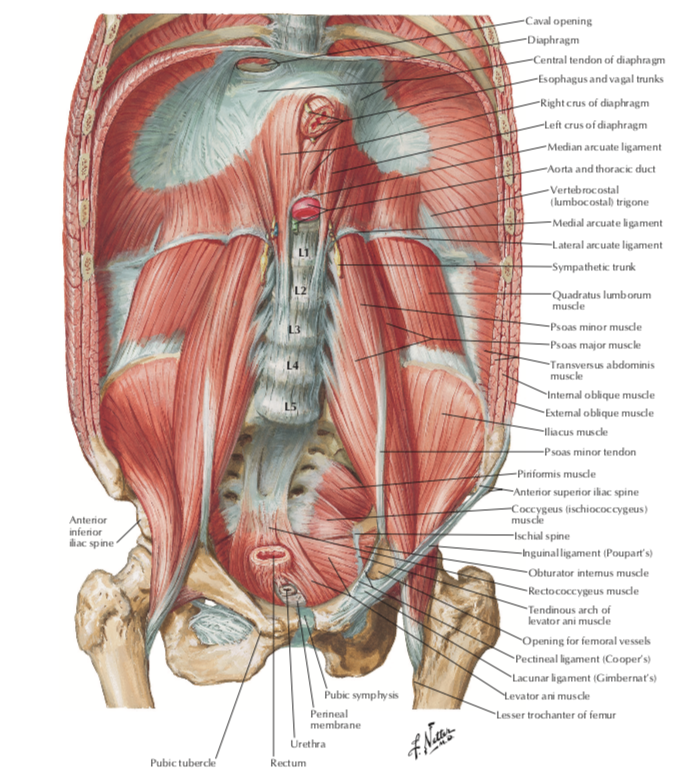Your Cart is Empty
October Sale! Up to 10-60% Discount on online courses!
October Sale! Up to 10-60% Discount on online courses!
October Sale! Up to 10-60% Discount on online courses!

February 08, 2019 4 min read
Laura is here to help us clear the air about the mysterious psoas muscle. You have questions about the psoas muscle and we have an expert's answers:
Question 1: A lot of online resources mention how the psoas may either be torn or too tight when someone is experiencing discomfort. There are not many resources on deciphering which one it is. How can you tell if your psoas muscle is torn vs too tight?
Laura:
Muscle Tear: Most often when the psoas muscle is torn, there is going to be pain involved when you stretch or concentrically contract the muscle. So, if you were going to flex your hip for example (as the psoas is a hip flexor) there would be pain.
Tight Muscle: When a muscle is too tight, there is generally no pain, but there may be a limited range of motion. The psoas is a hip flexor, and therefore, when it is shortened or tight, the individual will have limited hip extension because the psoas cannot be stretched to allow for adequate hip extension. There will not be pain when the muscle is stretched, rather a big stretch may be uncomfortable.
Discomfort and pain are different and most people should be able to tell the difference if something is painful versus just uncomfortable when a muscle is stretched too far.
As a PT, it is extremely common to see tight psoas muscles. It is rare to see someone with a loose psoas as most of our days are spent seated which shorten the muscle.
Question 2 : What resources do you recommend for learning where the psoas muscle is.
Laura:
As a physical therapist, I would recommend some of the anatomy books I use.
Here are a few:
1. Netter’s Atlas of Human Anatomy  2. Moore- Clinically Oriented Anatomy
2. Moore- Clinically Oriented Anatomy
3. A Yoga Alliance Certified Yoga Teacher Training Course
Although not technically a book, a quality yoga teacher training course will include lessons on anatomy as well as exercises and poses that benefit not only the psoas, but the body as a whole.
Question 3: What is your personal/professional opinion on the best stretch for a torn psoas muscle and for a tight psoas muscle?
Laura:
These are the stretches I recommend for patients who have a tight psoas muscle:
In my opinion, the stretches that I would use for a torn psoas muscle would also be the same as those I would use for a tight psoas muscle.
Here is where it gets tricky…More often that not a torn psoas occurs from lack of flexibility, that is the muscle is not able to stretch appropriately when it is contracted.
There are also different types of tears (Grade 1, 2, and 3). In the case of grade 1 and 2 tears, the muscle is not completely torn, but some of the fibers are disrupted. Grade 1 is a small tear generally without bruising present. Grade 2 is larger tear with bruising, but again some of the fibers are still intact. In the case of a grade 3 tear, the muscle is completely torn. In this case I would not recommend stretching, because there is no intact muscle to stretch at that point. I would only recommend stretching for grade 1 and 2 tears. That being said, I do not recommend over-stretching in this case or forcing the muscle to stretch. I would advise gentle stretching just to the point of tension of the muscle where there is little pain and discomfort. Too much stretching with a torn psoas or over-stretching can actually damage the torn muscle further.
When stretching, I always advise stretching to the point of tension and not forcing our muscles to stretch further. Gentle stretching daily or multiple times a week is a great way to improve mobility without damaging muscles through over-stretching.
Over-stretching can cause micro-tears in our muscles and instability in our joints, which is something that we do not want to happen. Remember that when we are stretching a muscle, we are also stretching the connective tissues around that joint. Connective tissues, such as fascia and ligaments, do not have the elasticity that muscles do and when over-stretched do not return to their original elasticity. These connective tissues need a certain amount of elasticity in order to protect our joints properly so that they are not unstable. Muscles, also need a certain amount of tension in order to adequately contract and lengthen. Once over-stretched, these muscles are unable to produce adequate enough tension in order to contract properly.
For example, think of an elastic rubber band. A new rubber band has a certain amount of recoil that is strong, and snaps back efficiently. An old rubber band that is stretched out, does not have the same recoil. This is the way that our muscles and connective tissues work as well. For this reason, when a muscle is loose, I do not recommend stretching that muscle often. The muscle needs to maintain a certain elasticity in order for there to be appropriate hip mobility. In the case of an overly-stretched out psoas, I would not recommend stretching that muscle. The muscle does not have an adequate length-tension relationship to provide a strong enough contraction for hip flexion.
#psoas #physicaltherapy #psoasmuscle #chronicbackpain #lowerbackpain #stretch
Learn more about the psoas muscle HERE.
Comments will be approved before showing up.
Sign up to get our latest tips, promotions, updates from the school and more...